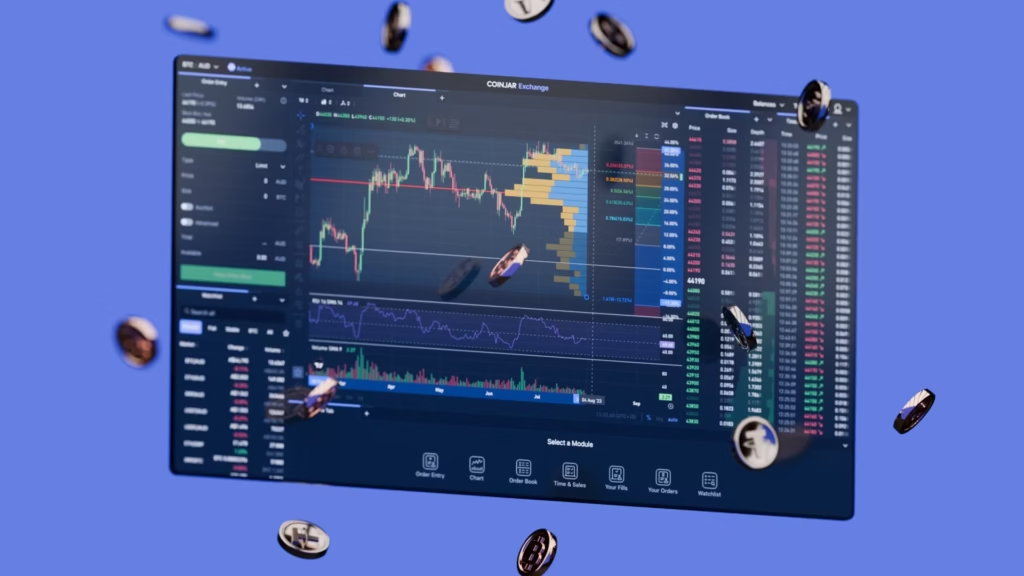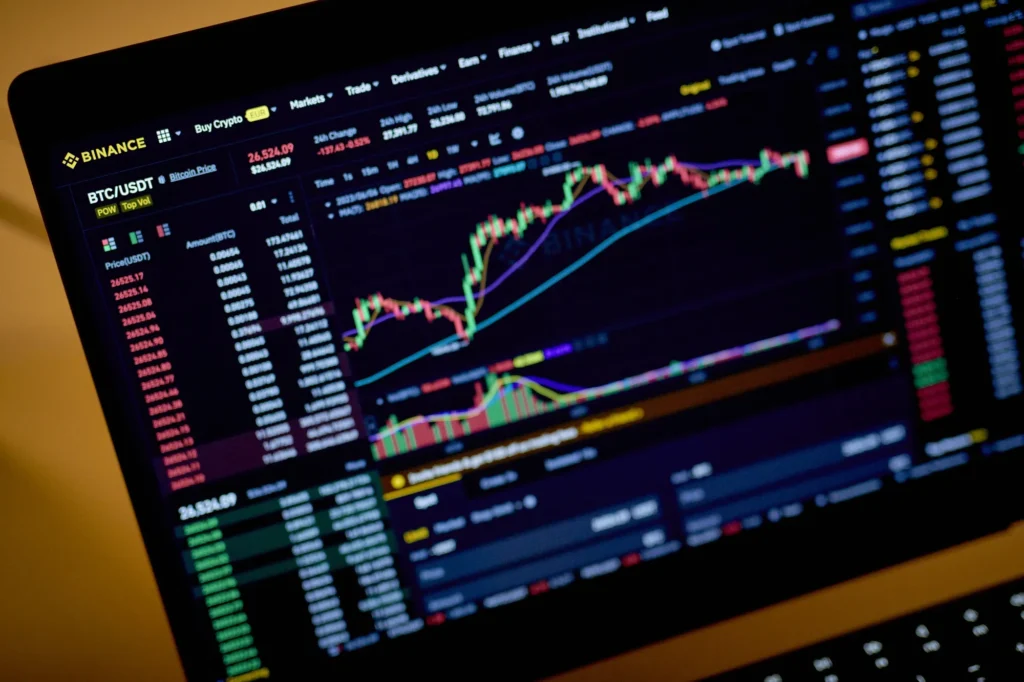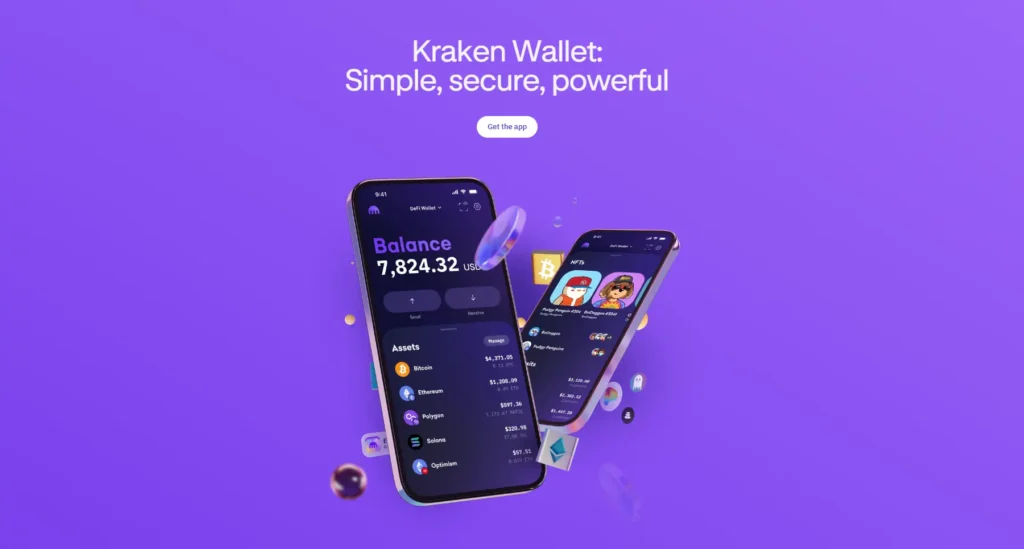Tired of hunting for a crypto exchange that won’t empty your wallet with fees? You’re in good company. Around 70% of crypto traders have switched platforms due to high costs. If you’re eager to reduce expenses and increase your earnings, you’re in the right place.
We’ve curated a list of the 10 Best Low Fee Crypto Exchanges, so you can trade confidently and save money.
Table of Contents
Join us as we dive into the details, statistics, and unique features that make each exchange stand out in today’s competitive trading landscape.
Best Crypto Exchange With Lowest Fees

| Exchange | Location | Spot Trading Fee (Maker/Taker) | Other Fee-Reduction Methods | Unique Features |
|---|---|---|---|---|
| Binance | Global | 0.1% (with BNB usage) | Volume-based discounts, BNB discount | Advanced trading tools, extensive listings |
| KuCoin | Seychelles | 0.1% | Volume-based discounts, promoting activities | Staking, lending, user-friendly interface |
| Coinbase Pro | USA | 0% / 0.04% (for high volume traders) | High trading volume discounts | Strong security, advanced charting tools |
| OKX | Seychelles | 0.08% | Futures market fee reductions | High leverage, futures trading |
| Bitget | Seychelles | 0.1% | Futures market fee reductions, trading contests | Copy Trading, high liquidity |
| Crypto.com | Singapore | 0.04% for Spot Grid trading & 0.15% standard | Visa Card cashback, staking benefits | Spot Grid trading, comprehensive platform |
| Huobi Global | Seychelles | 0.2% (with HT usage) | Volume-based discounts, HT points program | HT discount program, margin trading |
| Kraken | USA | 0% / 0.1% (for high volume) | Dark pool trading for institutions | Multi-asset trading, high security |
| Bitfinex | British Virgin Islands | 0.1% for high volume traders | Margin trading fee reductions | Margin trading, OTC trading, funding markets |
| Bitstamp | Luxembourg, USA, UK | 0.5% (volume-based discounts available) | Fiat trading, institutional trading options | Long history, regulatory compliance |
Best Low Fee Crypto Exchanges
1. Binance: A Global Leader in Low Fees

Location: Global with regional licenses
Transaction Fee: 0.1% for spot trading, reducing with BNB usage
Features: Advanced trading tools, comprehensive market offerings
Why Binance Stands Out: Binance is famous for its low fees, making it a go-to for cost-conscious traders. Users can reduce fees even more by using Binance’s native token, BNB.
The platform offers a wide range of markets, from traditional fiat-to-crypto exchanges to peer-to-peer trades. This ensures that users can always find competitive rates while maintaining security and liquidity.
A Closer Look: Binance’s trading fees are quite low, ranging from 0.01% to 0.1%. Regular traders can enjoy even lower fees through volume-based discounts. Both its mobile app and desktop platform are user-friendly and packed with features.
They offer real-time data, advanced charting tools, and support for deposits or withdrawals in various currencies.
This makes Binance a top choice for a robust trading experience.
2. KuCoin: Emerging as a Budget-Friendly Option
Location: Seychelles
Transaction Fee: 0.1% for spot trading, with discounts available
Features: User-friendly interface, substantial staking, and lending options
Why It Stands Out: KuCoin may not be the most famous name in crypto circles, but it shines with impressively low fees. This appeals especially to those just starting their crypto journey.
With its focus on offering low-fee exchanges and a notable KuCoin Token for trading, it’s a smart choice for budget-conscious traders eager to cut down on costs.
In-Depth Look: KuCoin begins with trading fees as low as 0.10%, and offers opportunities for fee discounts. Its mobile app ensures you can trade anytime, anywhere.
Plus, the staking and lending options provide extra ways to build your crypto assets without much effort.
3. Coinbase Pro: A Blend of Security and Savings
Location: USA
Transaction Fee: Maker fee: 0% to 0.50%, Taker fee: 0.04% to 0.50%
Features: Advanced trading tools, strong security protocols
Coinbase is known for its higher fees on basic trades. However, its advanced platform, Coinbase Pro, offers a better deal for seasoned traders.
The fees are considerably lower, appealing to those who prioritize cost-effectiveness and security.
Let’s dig deeper. Coinbase Pro’s fee structure is based on trade volume. The more you trade, the less you pay per transaction. This makes it a smart choice for active users. Plus, its user-friendly design and sophisticated charting tools cater to all traders.
Whether you’re a beginner or an expert, you can trade with ease and confidence.
4. OKX: A Newcomer with Notable Fee Structures
Location: Seychelles
Transaction Fee: 0.08% for spot trading
Features: High leverage, futures trading
Why it Ranks: OKX stands out as a top low-fee crypto exchange, particularly noted for its futures market. This has drawn the attention of traders worldwide.
By offering leverage and derivative products, it expands trading possibilities and serves as a comprehensive trading hub.
Deep Dive: With trading fees as low as 0.08%, OKX is among the most competitive exchanges. Its strong futures market not only offers the potential for significant returns but also appeals to users interested in algorithmic trading and crypto derivatives experimentation.
5. Bitget: Deep Trading Pools at Low Fees

Location: Seychelles
Transaction Fee: 0.1% for spot trading
Features: Futures trading, Copy Trading, high liquidity
Why it Ranks: Bitget has found its spot in the trading world with impressively low fees. This is especially true in its futures market, where traders can use high leverage to their advantage.
The platform’s Copy Trading feature stands out by letting users follow and replicate strategies of top traders, adding a fresh take on conventional trading.
Deep Dive: Bitget’s trading fees kick off at a mere 0.1%. Traders can also enjoy further discounts through various promotions and contests.
The futures market boasts strong liquidity, making it perfect for executing sizable trades without significant slippage.
Plus, Bitget promotes social trading with its Copy Trading feature. This allows newer traders to both learn from experts and potentially earn profits at the same time.
6. Crypto.com: Innovating with Fee-Free Trading Options
Location: Singapore
Transaction Fee: 0.04% for spot trading, with zero fees on the Spot Grid trading feature
Features: A comprehensive platform, including Crypto.com Visa Card, lending, and staking
Why It best: Bitget has carved out a niche in the trading world thanks to its incredibly low fees, particularly in the futures market where traders can leverage high advantages.
The platform’s Copy Trading feature is a standout, enabling users to follow and imitate the strategies of top traders, offering a novel approach to traditional trading.
Deep Dive: Bitget offers a competitive entry point with trading fees starting as low as 0.1%. Users can also benefit from more savings through various promotions and contests.
The futures market is known for its robust liquidity, ideal for executing large trades without significant price swings.
Additionally, Bitget champions social trading with its Copy Trading feature, giving new traders the dual benefit of learning from seasoned experts and the potential to earn profits simultaneously.
7. Huobi Global: Competitive Fee Structure for Global Reach
Location: Seychelles
Transaction Fee: 0.2% for spot trading, with volume-based discounts
Features: Advanced trading options, Huobi Token (HT) discount program
Huobi Global has made a name for itself worldwide thanks to its low fees. Users who use its native token, HT, get even better rates. The platform frequently updates its products to meet evolving needs.
For high-value traders, fees can drop as low as 0.045%, making it an attractive choice. The points program is an added bonus. Huobi also offers a wide range of trading options, from margin trading to futures.
This caters to various trading strategies, appealing to both beginners and seasoned traders alike.
8. Kraken: Multi-Asset Trading at Low Fees

Location: USA
Transaction Fee: Maker fee: 0.0% to 0.16%, Taker fee: 0.1% to 0.26%
Features: High security, over 200 cryptocurrencies for trading
Why Kraken Stands Out: Kraken is known for its low maker fees. This feature is attractive to users who provide liquidity.
Additionally, its strong security measures and a wide range of crypto offerings enhance its reputation.
In-Depth Analysis: Kraken employs a maker-taker fee structure, with some of the lowest fees for market makers starting at 0.0%. The platform includes features like dark pool trading for high net worth individuals and block trades.
This ensures that significant institutional trading occurs alongside retail trading.
9. Bitfinex: Pioneering Low Fee Structures
Location: British Virgin Islands
Transaction Fee: 0.1% for spot trading, with fees reducing for high-volume traders
Features: Margin trading, OTC trading desk
Why it Ranks: Bitfinex stands out for its very low spot trading fees. Its robust ecosystem attracts advanced traders, especially for margin trading.
Deep Dive: Bitfinex has trading fees as low as 0.1%, making it ideal for high-volume trading. The platform offers powerful tools, including margin trading, lending, OTC trading, and funding markets.
This makes Bitfinex a pioneer in the trading space.
10. Bitstamp: Where History Meets Low Fees
Location: Luxembourg, USA (New York), UK (London)
Transaction Fee: 0.5% for spot trading, with volume-based discounts
Features: Fiat trading, compliance with international regulations
Why It Stands Out: Bitstamp is one of the oldest crypto exchanges. It pairs a solid reputation with attractive fees.
By adhering to regulatory standards across multiple jurisdictions, it provides users with peace of mind.
In-Depth Analysis: Bitstamp offers potential fee savings through volume-based discounts. It ensures a secure and intuitive trading experience, complete with fiat trading options.
Its long history in the crypto sphere inspires trust and confidence.
Types of Crypto Exchange Fees

When selecting a crypto exchange with low fees, it’s crucial to understand their fee structures.
Here are the main types of fees you might come across:
1. Trading Fees
- Trading platforms often implement a maker-taker fee structure. Makers enhance market liquidity by placing orders that aren’t instantly executed. Takers, on the other hand, decrease liquidity by completing these orders.
- As a result, maker fees tend to be lower, sometimes even non-existent, whereas taker fees are generally higher.
2. Deposit and Withdrawal Fees
- Exchanges might impose fees when you deposit funds. This is especially true with methods like bank transfers or credit/debit cards. Withdrawal fees are even more common. These charges come into play when you’re moving cryptocurrencies out of the exchange.
- The fee amount can vary depending on the cryptocurrency and the desired network speed.
3. Network Fees
- When you transact on the blockchain, exchanges typically charge you network fees. For Ethereum, these are known as gas fees. These fees pay for the processing of transactions on the cryptocurrency’s network.
4. Conversion Fees
- When exchanging fiat currency for cryptocurrency or vice versa, you might encounter a fee. These fees are charged by exchanges for converting between the two.
5. Inactivity or Maintenance Fees
- If an account stays inactive for too long, some exchanges might charge an inactivity fee. Holding certain assets may also incur maintenance fees with other exchanges.
6. Staking and Lending Fees
- Participating in staking or lending on exchanges such as KuCoin and Crypto.com can lead to service-related fees. However, these activities may also provide rewards.
7. Referral Program Fees
- Inviting new users to join an exchange can earn you bonuses. Yet, be aware that referral fees may apply to the transactions your referrals make.
8. Advanced Features and Services Fees
- Some trading platforms offer advanced features but might charge more for them. These features include margin trading, futures trading, and OTC trading. If you use these services often, be prepared to pay additional fees.
9. Fiat Trading Fees
- When you trade with fiat currencies on exchanges, you might encounter fees. These fees apply to both deposits and withdrawals. Typically, they tend to be higher than those for crypto-to-crypto trades.
10. Margin Trading Fees
- Margin trading allows you to borrow funds to trade, and exchanges like Bitfinex charge interest on the borrowed amount.
Grasping the different types of fees is crucial for accurately calculating your trading costs. This knowledge helps you make informed decisions about which exchange aligns best with your trading habits and financial goals.
Compare these fees carefully. Explore ways to save, such as volume-based discounts or using native tokens.
Platforms like Binance and Huobi Global offer these options. By doing so, you can notably decrease your trading expenses.
Conclusion
Picking a crypto exchange isn’t just about finding the lowest fees. Beyond comparing percentages, you need to consider trading volume, features, security, and user experience.
This deep dive into the top 10 low-fee crypto exchanges guides traders in making savvy choices. Minimize your costs while maximizing your trading potential.
Keep yourself informed, trade wisely, and unlock the full potential of your crypto adventure.










